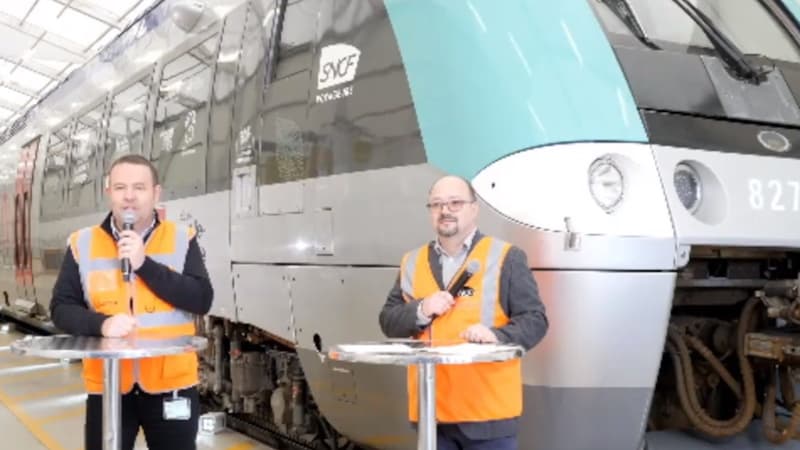A new weapon in the SNCF’s decarbonization arsenal. The operator took advantage of the national public transport meetings in Clermont-Ferrand to take stock of the progress of the regional battery train.
It will join biofuel-powered trains, hydrogen trains and hybrid trains that should allow SNCF to move away from diesel in 2030 and reach its goal of net zero carbon emissions in 2050.
In fact, it must be remembered that a quarter of its trains still run on diesel and that 40% of the network is not electrified, mainly local and regional lines.
Given that neither the State nor the regions have the financial capacity to electrify the entire network (the cost is colossal: 1 million euros per kilometer), the strategy deployed by the SNCF consists of using ecological equipment on non-electrified lines or line sections. .
Dual mode trains
The battery train is intended to run on routes that combine electrified and non-electrified sections. In the latter, instead of diesel engines, lithium-ion batteries predominate “with a range of 80 kilometers,” says Alstom, SNCF’s industrial partner, and which allow an 80% reduction in CO2 emissions. The train can reach a maximum speed of 160 km/h.
The train can be recharged at the station but especially while moving with the energy recovered when braking and in sequences where it circulates on an electrified track.
“There will be a charging system throughout the journey, we are also thinking with the manufacturers about developing a fast charging system to recharge very quickly when the train stops,” explains Corinne Talotte.
The project was launched in 2020, the first tests were carried out this year and will continue in 2024 in five regions (Auvergne Rhône-Alpes, Hauts-de-France, New Aquitaine, Occitanie and Provence-Alpes-Côte d’Azur). therefore he agreed to participate in the experiment.
Each of these five regions modified one train from its TER fleet. The first train ordered by the Nouvelle-Aquitaine Region left the Alstom factory in Crespin during the summer and has just begun its dynamic tests at the Bar-le-Duc Railway Test Centre.
The objective: commercial entry into service of one train per region starting at the end of 2024 and if all the lights are green, a more massive deployment in 2025.
Retrofit
In addition to dispensing with diesel, this technology does not require the manufacture of new trains (as occurs with hydrogen trains), but can be adapted to existing trains by removing the diesel engines to replace them with batteries, a bit like modernizing automobiles. .
“We have four diesel engines, we removed two of them and replaced them with battery holders and with a software system that will optimize the energy,” adds Corinne Talotte.
The idea is to recover 700 trains that are already in circulation and that the TER uses to convert them into electric ones. These are trains “that are already 15 or 20 years old” and are therefore in middle age, according to Jean-Baptiste Eyméoud, general director of Alstom for France.
“Greening can begin in a fleet that is already in circulation,” he added. Of the 700 existing trains, just over 300 have been identified and are eligible for the project.
Clean trains, where are we?
For the SNCF, there is no technology that replaces diesel and is better than another. The principle is rather to develop a technology that adapts to a specific traffic context, in addition to others.
-Biofuel-powered train: the B100 is already in service on the Paris-Granville line with 15 equipped trains.
-Hybrid train (diesel and batteries): they will circulate starting at the end of this year in four associated regions: Grand Est, Nouvelle Aquitaine, Center Val-de-Loire and Occitanie-Pyrénées.
-Hydrogen train: 12 trains have been ordered for the regions of Burgundy-Franche-Comté, Occitanie, Grand Est and Auvergne-Rhône-Alpes. They should operate commercially in 2025 like the battery train.
Source: BFM TV


